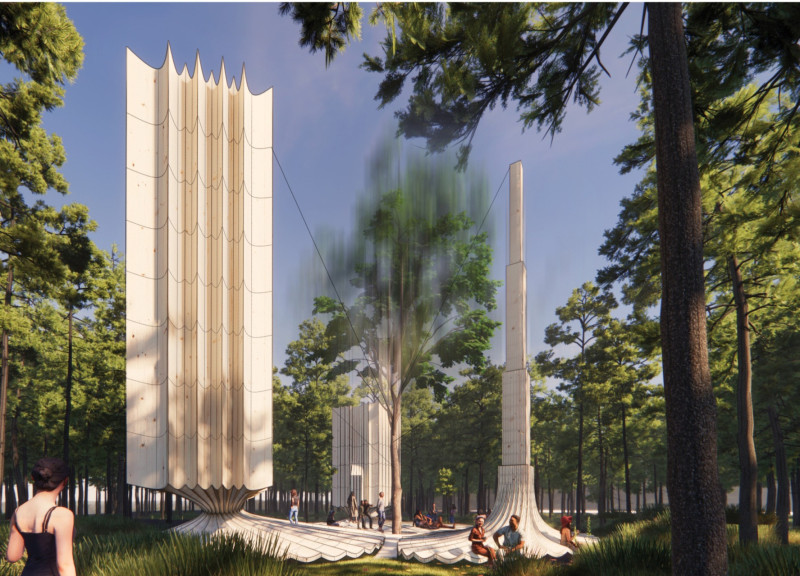5 key facts about this project
Extraction Point is a timber pavilion located in the Ossipee Pine Barrens of New Hampshire, a region known for its distinct forest ecosystems. The structure serves as both an exhibition space and a reflection on sustainable practices in timber use. The central design concept explores the act of uprooting a tree while protecting others, creating a conversation about environmental responsibility and resource management.
Timber Pavilion Design
The pavilion is composed of an arrangement of smaller structures made from CNC milled and unit-based Cross-Laminated Timber (CLT). This material emphasizes the flexibility of timber in construction while linking directly to the project’s focus on sustainability. The design is modular, allowing it to adapt to the specific conditions of the site and blend with the surrounding natural environment.
Structural and Aesthetic Elements
The shell of the pavilion includes a mix of repetitive and unique CLT units. This blend not only demonstrates the strength of timber but also contributes to the overall visual appeal. The design aims to provide protection to the remaining trees in the area. The structural choices create a dynamic environment that enhances interaction with both the pavilion and the forest around it.
Visitor Interaction and Experience
Inside the pavilion, the podium crafted from CLT allows visitors to engage with the space in different ways, whether they are sitting or lying down. This design invites contemplation and encourages reflection on the themes presented. The layout of the seating positions visitors close to a central, symbolic tree, reinforcing the narrative concerning timber use and conservation.
Technical Features
The project includes the use of tensile steel cables and motorized actuators in the timber extraction process, adding a layer of technical precision. These components ensure that the extraction is controlled and methodical. Together, they support the pavilion’s approach to environmentally aware practices. The overall design aims to connect architectural intent with practical resource management strategies.
The pavilion’s form connects with the natural contours of the site, enhancing its role as a protective shelter while also engaging with the landscape around it. It invites exploration and questions about the relationship between human activity and the environment.



















































